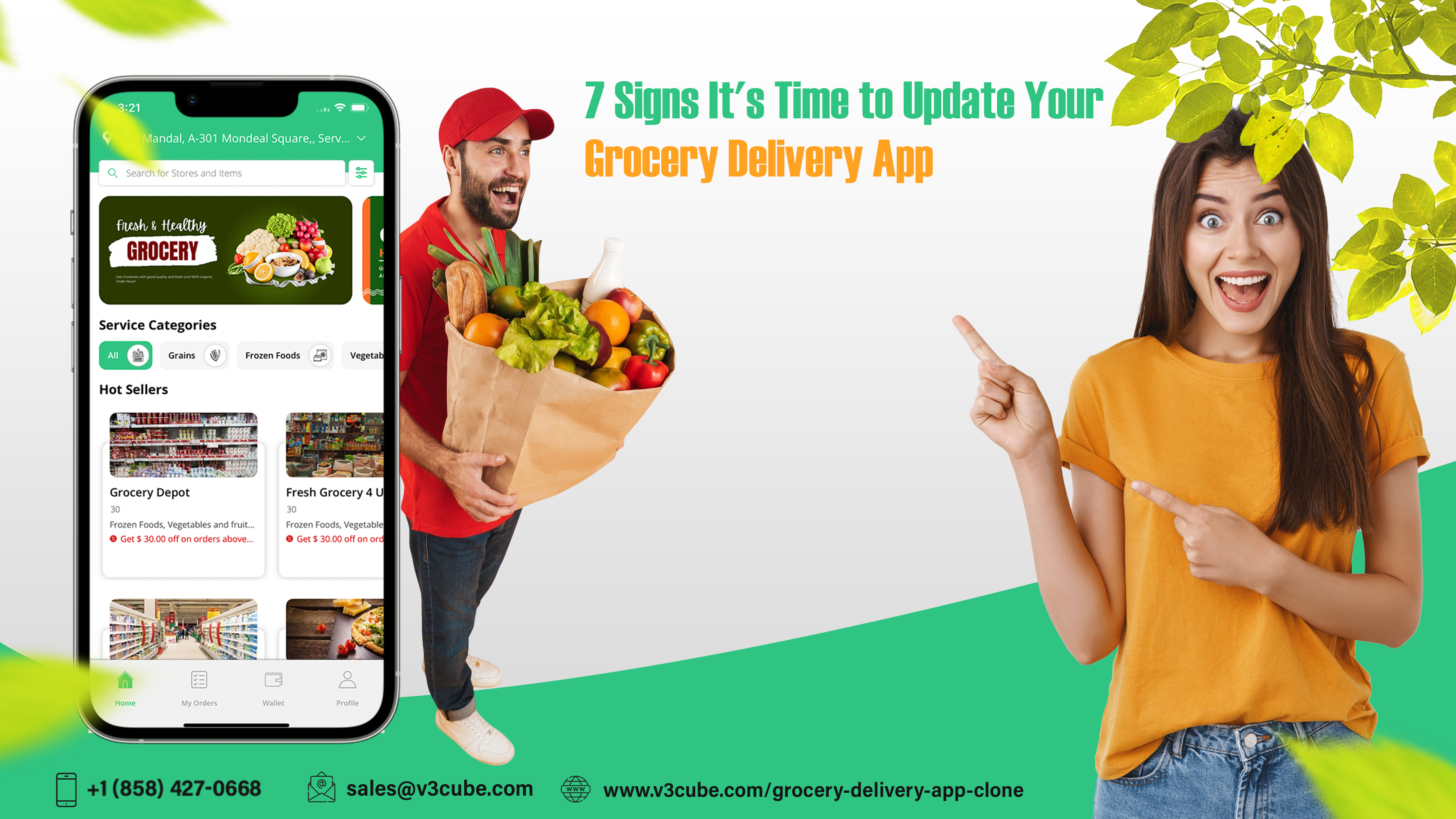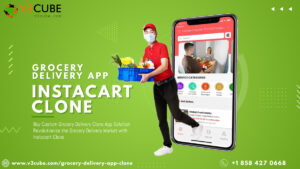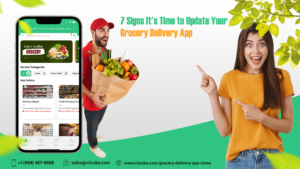
Like any other app, a Grocery Delivery App needs timely updates to maintain the number of new users while retaining the old ones. The development process is indeed much more creative and engaging, but app updates are just as important as them. If you are not updating your app, it will affect your on-demand grocery delivery business. In this blog, you will see seven signs that slowly emerge in your app as a symptom of an update.
Introduction
On-demand grocery delivery apps are known for quick deliveries from local marketplaces. Hence, they require frequent updates to fix bugs, enhance the user experience, introduce new features, and comply with local regulations. Without regular checkups, grocery delivery apps risk losing relevance, underperforming, and losing to heavy competition. Suppose you want to stay in the on-demand Grocery Delivery App business. In that case, you must prevent your app from showing the signs below.
Why should the Grocery Delivery App be Updated?
Most entrepreneurs often believe that the app development phase is over after the launch of their app. In reality, the phase has just started. Whatever work you had done previously towards the betterment of your app will not take the final shape if you stop updating it after the launch. That is why post-maintenance updates are considered to be a big part of the overall app development budget project.
The reason they are given such importance is because of the current mobile app landscape. One thing you must keep in mind is that the mobile apps require frequent updates every two to three weeks. In other words, you should have your developers ready to tackle the initial customer feedback after the launch of your app. If avoided at the start, the below signs will start to emerge, throwing your entire hard work down the drain.
Users Reporting Bugs
Customer complaints about app issues and glitches provide the most direct feedback that an app needs bug fixes and optimizations. Poor user experience from a buggy app leads to negative reviews and ratings in the app store, impacting adoption and retention. Therefore, you must prioritize updates to resolve user-reported bugs on an urgent basis.
Low-Performance Metrics
Beyond direct feedback, usage and performance data trends also reveal when an app is underperforming its potential. Key metrics like daily/monthly active users, session times per user, and user retention rates over time can pinpoint engagement or experience issues that updates could address. Sudden drops or stagnation in growth warrant investigation and often lead to poor design implementation. Therefore, you should use material guidelines and HIG guidelines to keep your app’s design up to date.
New Features Needed
Users today expect apps to continually expand features and add new ones whenever necessary. Grocery apps that don’t introduce innovations like new payment options, personalized recommendations, and order tracking risk losing out to rival apps perceived as more advanced. Therefore, apart from regular updates, you must include specific in-app updates, such as updated navigation or typeface, and always be on the lookout for attractive new features.
Aging Codebase
The software frameworks, languages, and tools used to build apps see frequent new releases. Moreover, code written in older versions often becomes increasingly difficult to maintain and integrate with modern libraries. Legacy code also misses out on speed, efficiency, and security advances, making your app slow and causing frequent crashes.
Changes To Mobile Devices
In today’s advancing technological landscape, screen sizes, and device capabilities are expanding rapidly as new smartphone chips continue to evolve. Apps built for older generations of phones look and perform poorly on newer models. Therefore, the core structure of your grocery app should be compatible, leveraging new device features like personalized recommendations using predictive data analysis.
Responding To Security Concerns
From data regulations like GDPR to emerging cyber threats, Grocery Delivery Apps must evolve security protections through updates. Try adding biometric authentication or Face ID whenever a person logs in to your Grocery apps. For the backend, try adding two-factor authentication for security purposes. Moreover, vulnerabilities exposed in third-party libraries or platform firmware need to be addressed urgently as well. To do this, adapt to pushing updates immediately rather than waiting for scheduled refreshes.
App Store Guideline Changes
The Apple App Store and Google Play Store periodically revise their policy guidelines every month. Most developers are notified via email as these updates roll out to have their apps appear on the featured preview pages. Not complying with such changes results in low downloads and bad reviews.
Often seen as a sign, you must align your Grocery Delivery App with new rules that are mandatory to thrive in such a competitive environment. Moreover, issues related to privacy practices, content policies, and monetization are all solved with just one platform update to get your app back on track.
How To Handle Big Updates?
Updates are part of the app’s development lifecycle. For a grocery delivery app to remain relevant, secure, and in line with regulations, it must receive regular updates. Technology, customers, and industry trends are always evolving, and the only way your app will continue to offer value to users is if it grows, adapts, and changes over time.
To have timely updates implemented with effort, try to find an experienced white-label firm. These firms have more than a decade of experience creating, maintaining, and updating world-class delivery apps. Moreover, they understand when, why, and how you should update your app. It ensures the apps you develop for your business offer long-term value and a greater return on investment. To get in touch with a professional, search for the clone of the app you have in mind, such as Instacart Clone or HappyFresh Clone, and see the portfolio and demos of the clone app for a better understanding.
Conclusion
Grocery delivery apps face pressure to enhance, optimize, and secure the user experience over time through continual updates. Partnering with expert mobile app developers enables identifying issues early and refreshing apps appropriately. If you see any of these signs, try to find a quick-fix solution rather than going all-out on the issue at hand. Most of the time, issues related to UI/UX or features need an updated outlook to get things moving.







